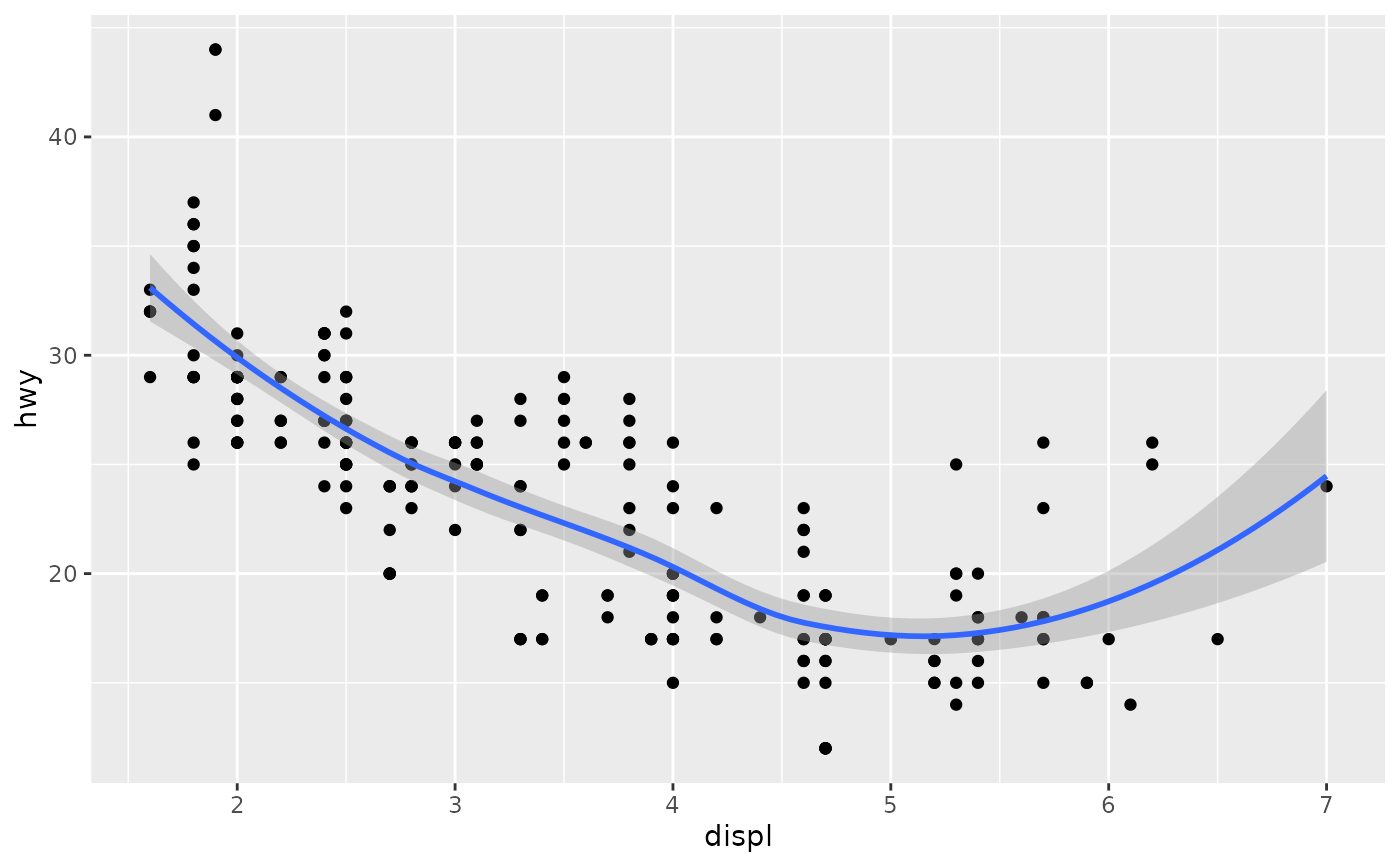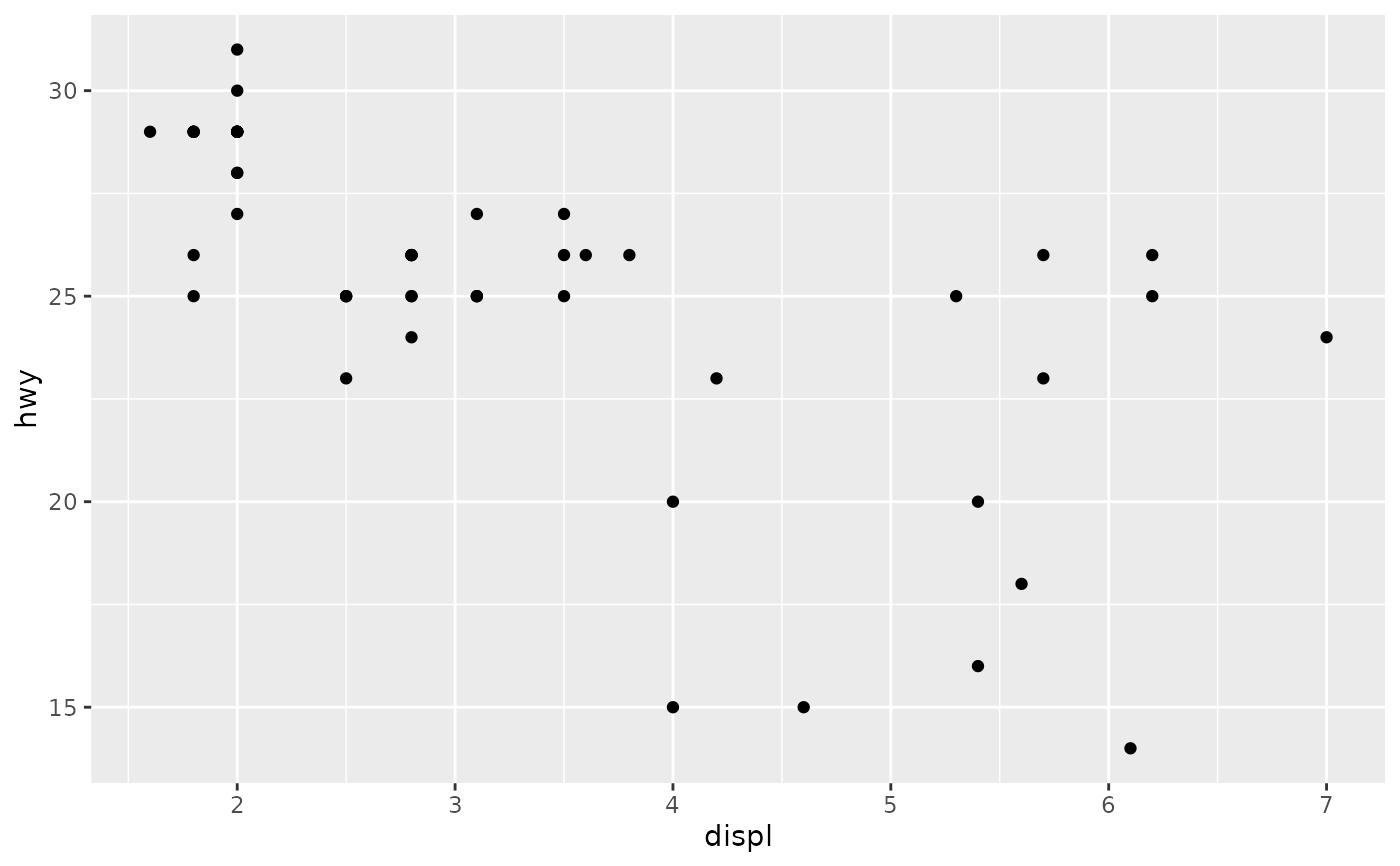+ is the key to constructing sophisticated ggplot2 graphics. It
allows you to start simple, then get more and more complex, checking your
work at each step.
What can you add?
You can add any of the following types of objects:
An
aes()object replaces the default aesthetics.A layer created by a
geom_orstat_function adds a new layer.A
scaleoverrides the existing scale.A
theme()modifies the current theme.A
coordoverrides the current coordinate system.A
facetspecification overrides the current faceting.
To replace the current default data frame, you must use %+%,
due to S3 method precedence issues.
You can also supply a list, in which case each element of the list will be added in turn.
Examples
base <-
ggplot(mpg, aes(displ, hwy)) +
geom_point()
base + geom_smooth()
#> `geom_smooth()` using method = 'loess' and formula = 'y ~ x'
 # To override the data, you must use %+%
base %+% subset(mpg, fl == "p")
#> Warning: <ggplot> %+% x was deprecated in ggplot2 4.0.0.
#> ℹ Please use <ggplot> + x instead.
# To override the data, you must use %+%
base %+% subset(mpg, fl == "p")
#> Warning: <ggplot> %+% x was deprecated in ggplot2 4.0.0.
#> ℹ Please use <ggplot> + x instead.
 # Alternatively, you can add multiple components with a list.
# This can be useful to return from a function.
base + list(subset(mpg, fl == "p"), geom_smooth())
#> `geom_smooth()` using method = 'loess' and formula = 'y ~ x'
# Alternatively, you can add multiple components with a list.
# This can be useful to return from a function.
base + list(subset(mpg, fl == "p"), geom_smooth())
#> `geom_smooth()` using method = 'loess' and formula = 'y ~ x'

